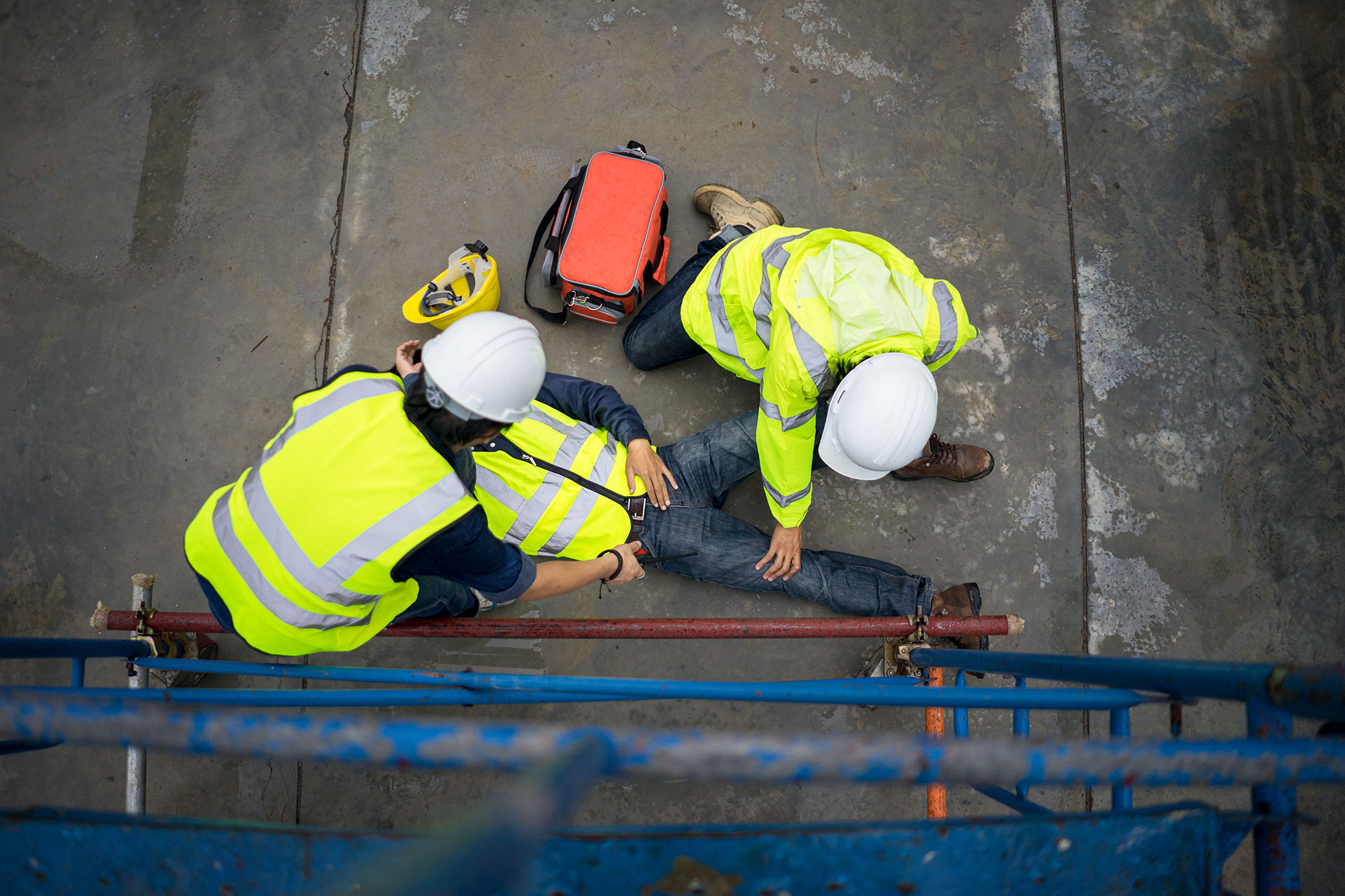An Employee Has Been Injured at My Business. What Should I Do?
As an employer, it is vital to have a protocol in place to ensure all employees know what to do when an injury occurs at work. A key piece of this protocol is advising employees to report all injuries immediately. This will allow you, as the employer, to get the injured employee the proper medical treatment in a timely fashion. It will also help you understand what causes injuries and how you may be able to prevent them in the future.
Engage in a conversation with the employee and ask, “Are you OK?”
Engage with the injured employee and ask them to explain and to demonstrate how the accident happened, if they are able. By doing this, you are starting the investigation stage of an injury. If the employee requires immediate medical assistance, call 911.
Secure the scene and investigate the accident.
Investigating a work-related injury is the first step in helping the employee, employer, and Claims Representative understand how the injury occurred, and it will alleviate later questions about the mechanism of injury. Investigating a reported injury allows the employer to take corrective action to control secondary accidents and identify sources of hazards and preserve evidence. Interview witnesses – they can have a lot of useful information about how the injury occurred.
To treat with a medical provider or not to treat…
Take the following steps to continue the injury management process:
Employee:
- If your company is insured for Workers’ Compensation through Michigan Millers Insurance, the supervisor and employee should notify their independent insurance agent or call our 24 / 7 claims line at (877) 858-5361.
If seeking medical attention outside of the workplace, the employee should:
- Provide the medical report received from the medical provider to their supervisor / manager after the initial medical appointment and each subsequent appointment thereafter.
Employer:
- Based on the medical report, the employer should coordinate light-duty work with the employee, if applicable. Once the employer determines light-duty work, a job offer listing the duties should be given to the employee in a written format. As the employee continues treatment, and if the restrictions change, a new job offer should be made for each change in restrictions.
- Email or fax a copy of the medical report and the light-duty work to the Claims Representative assigned to handle the claim. This will ensure timely sharing of information.
If an employee is taken completely off of work:
- Work with the Claims Representative in communicating with the medical provider that you, as the employer, have light-duty positions available. The Claims Representative can work with the medical provider and advise what light-duty work is available, which in turn, can lead to a release to return to work for the employee.
The best practice in managing work-related injuries is communication. This allows for faster return to work for the injured employee and lower costs overall.
- Become familiar with your machine. Read and understand the operator’s manual and familiarize yourself with all the controls. Leave all of the safety features intact. Check your snow blower every time before you use it and re-familiarize yourself with it before the season begins. Know how to stop the machine quickly.
- Always keep hands and feet away from all moving parts of the machine. Never place your hands in the auger. If the machine clogs while removing snow, shut the machine off and wait for all moving parts to stop. Some manufacturers recommend removing the spark plug wire from the spark plug. Remove snow with a stick or a similar instrument. Be prepared for a clogged machine to jump once the obstruction has been cleared.
- Never leave a machine running unattended. Shut the snow blower off if you must leave for even a small amount of time. Never re-fuel the machine while running or if the engine is hot. Add fuel outdoors, as the vapors are highly flammable, explosive, and dangerous if inhaled. There is also a risk for burns as parts of the machine, especially the engine and muffler become extremely hot.
- Never store the machine in the house or inside a building where open sparks or flames are present. Also, do not store it next to water heaters or furnaces.
- Walk behind the machine, keeping a firm grip on the handles at all times. Work the snow slowly; there will be less chance for clogging if you don’t rush the job. If you need to back up or change directions do so carefully to avoid tripping. Be prepared to release the snow blower and / or the traction drive if you lose your footing. Be careful of curbing or holes in the pavement. If you must clear snow from a sloped surface, clear by going up and down, not across.
- Before beginning to remove snow, make sure the area is clear. Remove doormats or any other objects that may be picked up by the machine. Some machines are capable of throwing snow at distances of 30' or greater. Such machines can also propel rocks or other objects at a great speed, causing injury. Take special care to discharge snow away from people, buildings, or vehicles. If you use an electric snow blower, be aware of the location of the power cord.
- Wear adequate winter clothing while clearing snow.Being outdoors during the winter always carries the risk of frostbite and hypothermia. Dress in layers and wear boots that have good traction on slippery surfaces. Avoid long scarves and outerwear with strings that may become entangled in the moving parts of the machine.
- Only adults or mature teens should operate the machine, and even mature teens should be supervised. Teens should be able to understand the operations of the machine and be of sufficient size and weight to operate the controls comfortably. If there is any doubt, don’t take the risk.
- Concentration is the key to safe operation of a snow blower. Avoid the use of alcohol or other drugs and don’t work when you are angry or depressed. Also, don’t wear headphones.
Removing snow can be a big job, and it’s important to take precautions while operating a snow blower. Having a healthy respect for your machine will make it safer and easier for you to clear away those mountains of snow.
Source: Minnesota Safety Council
Acknowledgements: The Toro Company; U.S. Consumer Product Safety Commission; Michael Bermant, MD






